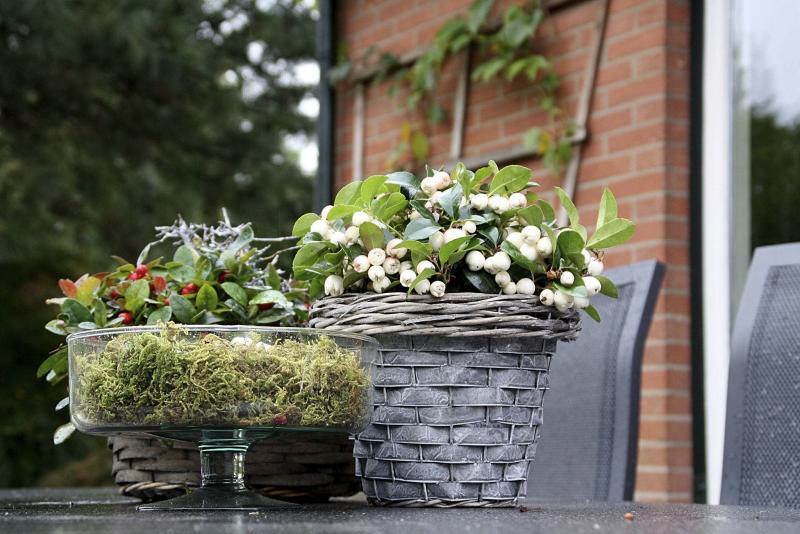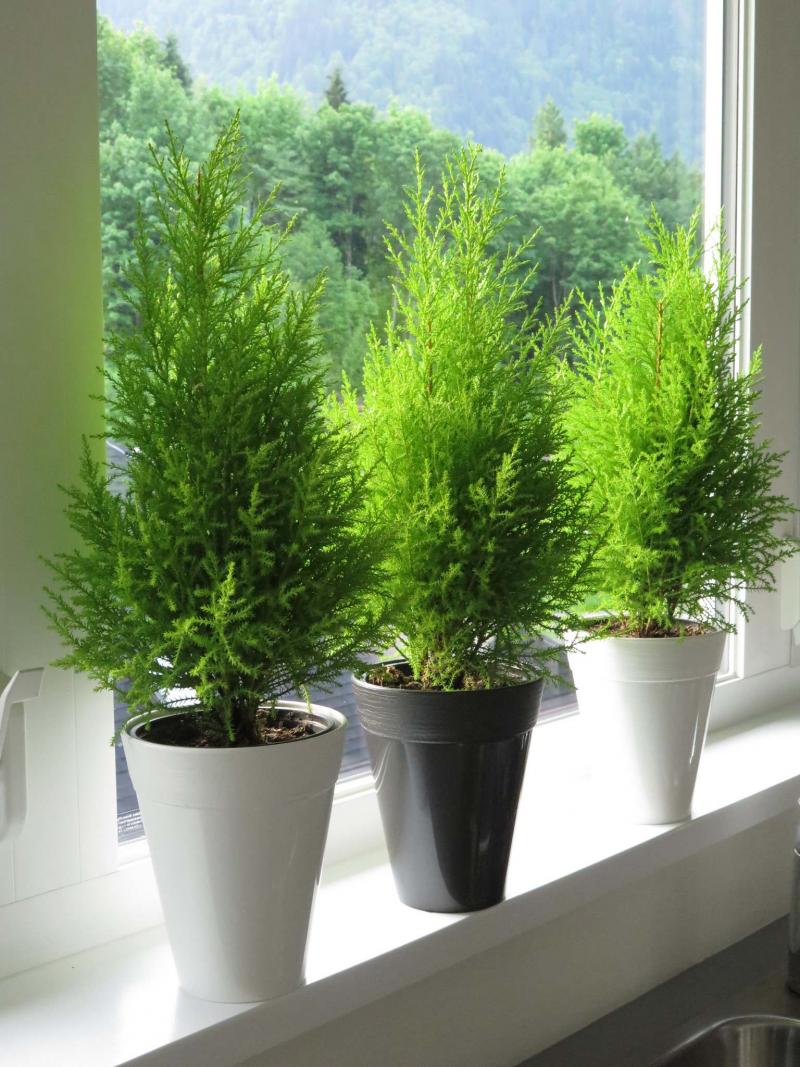
One Goldcrest Wilma Lemon Cypress is nice but three are better.
Qualitree
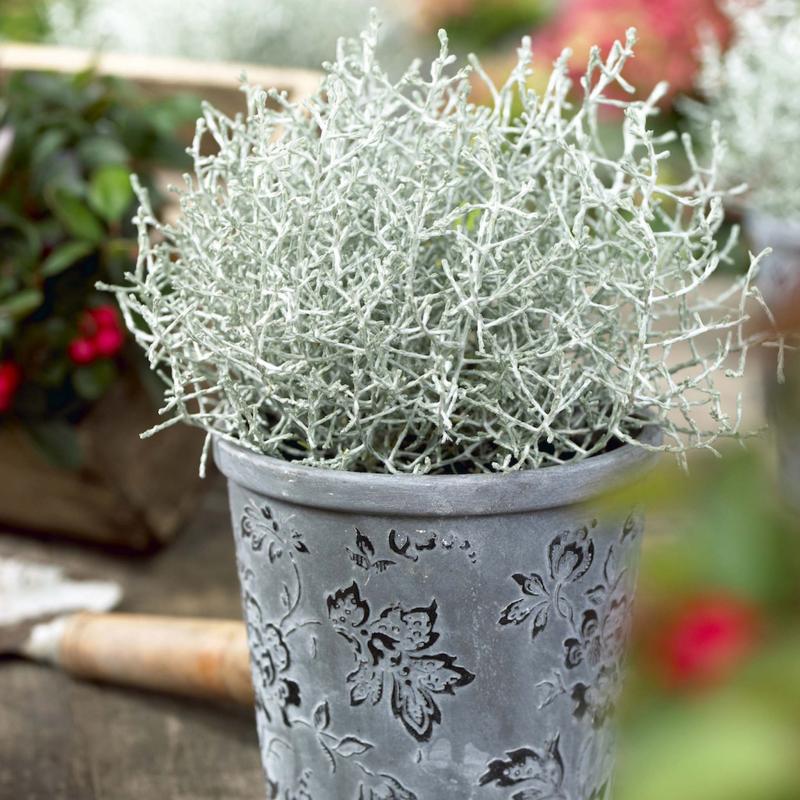
Cushion bush (Calocephalus brownii) is a luminous silver-toned beauty that reflects light on a starry night.
Qualitree
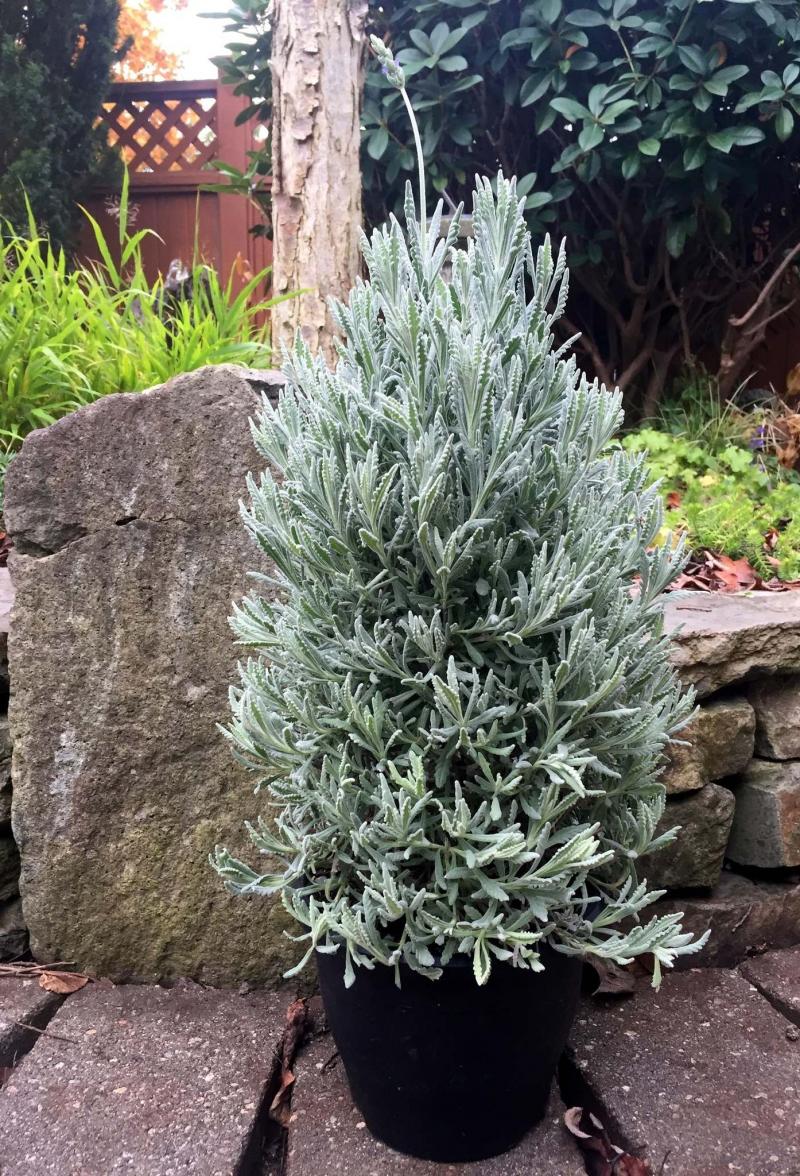
Tired of the traditional holiday plants? Switch to an aromatic lavender pyramid.
Paridon Horticultural
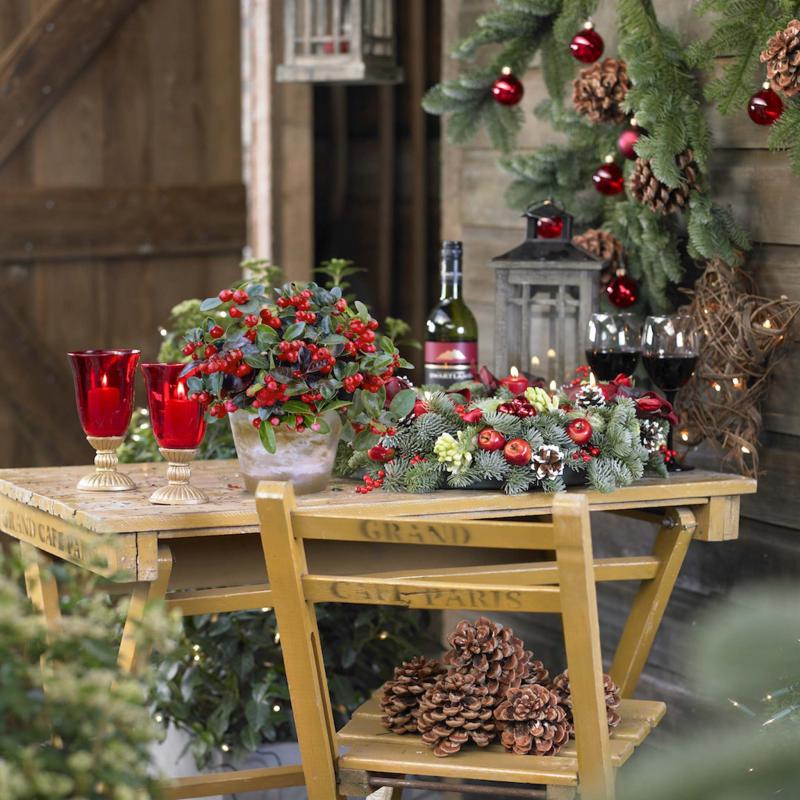
Lights, candles... action! Time to decorate mantles with berries, pinecones, and unique potted plants.
Qualitree
No matter what your design style may be — mid-century modern or ever-evolving contemporary — there are plenty of non-traditional plant choices this holiday season. The options to accessorize your mantle and table-scapes go beyond the familiar palette of red and green, but let’s begin with those two favourite colours.
Gaultheria procumbens, also known as wintergreen or winterberry, has fat, pendulous crimson red berries that dangle beneath glossy, dark green, upward-facing leaves. The cherry-shaped berries release a winter-fresh fragrance when crushed. Native to North America, including Manitoba, Gaultheria procumbens is hardy to zone 3 and is named for Jean-Francois Gaulthier, an 18th-century Quebec physician and botanist. Formerly, until scientists developed a synthetic form, oil of wintergreen from the leaves and fruit of winterberry was used to flavour mints, gum, toothpaste, mouthwash and teas.
A popular holiday plant for mixed arrangements, winterberry has been trending for some time in Europe. Another version, White Pearl winterberry (Gaultheria mucronata), has an abundance of creamy white berries and is a native of South America. The berries of both varieties stay on the branches for a long time. The petite size of winterberry and its large, showy berries are spurring so much demand that local garden centres such as Shelmerdine and Sunshine Greenhouse in Steinbach are placing new orders weekly.
A member of the Heath family (Ericaceae), the creamy colour of White Pearl winterberry would pair well with the soft pink and purple tones of heather (Calluna). Neither of these plants thrives in wet soil. Maintain consistent moisture and well-drained soil in an indoor environment.
Dorinda Penner, owner of Sunshine Greenhouse, recommends mixing winterberry with miniature conifers such as Cupressus. Dwarf lemon cypress (Cupressus macrocarpa Goldcrest Wilma) is one of the hottest plant choices this season for holiday decor. Try brushing against or gently rubbing its golden chartreuse foliage between your fingers to release the delicious citrusy aroma. Choose from gnome-like pyramid shapes, sculptural topiary or lollipop standards. The round head of the Cupressus topiary, perched atop a slender stem, needs no more decoration than a jaunty bow tied beneath its chin and a luxuriant layer of club moss on the soil surface.
Decorating with geometric shapes is a popular trend this year. Penner suggests planting a row of three lemon cypress standards or myrtle topiaries in a long, low rectangular container and placing it on a kitchen island or in the centre of a dining room table. Tuck in some mini glass ball ornaments that can easily be removed after the holidays for a long-lasting display.
Your lemon cypress will perform best indoors if it is watered regularly. Place it in a bright, sun-filled room, away from heating vents.
At a recent workshop at Shelmerdine for children, staff demonstrated how to craft a Dr. Seuss-inspired Grinch tree using a lemon cypress pyramid. Deanne Cram, greenhouse manager, says that it’s as simple as wrapping florist’s wire around the tree and ensuring it isn’t wrapped too tightly. A single ball ornament on the end bends the tree enough to resemble the tree swiped by the Grinch in the fictional town of Whoville in the classic children’s story How the Grinch Stole Christmas by Dr. Seuss (1956, Random House).
Pyramid forms of rosemary are a staple of the holiday season. Now you can choose lavender pyramids as unique miniature Christmas trees for the holidays. Another popular trend spotted in Europe by Canadian-based growers, silver-coloured lavender has been carefully shaped and trimmed for the holiday season. Lovely in a pot wrapped in burlap and embellished with a jute twine bow, fragrant rosemary and lavender plants make great accents on mantles or tabletops, or are a welcome idea for hostess and host gifts.
An occasional shearing together with a bright location and even moisture is all you need to maintain your lavender plant. In the spring, once the risk of frost has passed, plant your lavender outdoors in full sun.
A more unusual plant for the holidays, Calocephalus brownii (cushion bush), has a mounding habit with silvery foliage that resembles densely branched twigs. An evergreen native to southern Australia, cushion bush is an effective annual accent in mixed-container plantings for the summer garden. With the ability to reflect light, the luminous, ethereal beauty of cushion bush contrasts well with everything from poinsettia to succulents, lending an unexpected touch to holiday arrangements.
For indoor forest or fairy gardens, choose from miniature Chamaecyparis conifers, including trailing varieties. Pair these tiny, gnome-like cedars in their five-centimetre or 10-cm pots with silver or granite-coloured pebbles in a low-profile bowl. Some miniature conifer varieties have feathery, blue-grey needles. Another option is to group three or five in a basket with a soft layer of Christmas fern (Polystichum acrostichoides), a delicately textured evergreen fern that holds its dark green colour.
Conical-shaped Thuja plicata Goldy emits a pineapple fragrance when its golden leaves are rubbed or brushed against. Available in a variety of sizes, Cram says that some customers have maintained this indoor plant for as long as five years. Remember the artificial trees with a dusting of fake snow on the tips of branches? Chamaecyparis lawsoniana Snow White is an enchanting dwarf conifer with naturally white tips on new growth that gradually revert to the plant’s grey-green colour.
Miniature conifers will do well in your home this winter providing soil is kept evenly moist and they receive adequate light levels. Do not allow the soil to dry out, as it may not be possible to revive the plants. In the spring, plant them outside in containers for another season of enjoyment.
On November 25 and November 26, the second annual Homes for the Holidays House and Heritage Tour will offer self-guided tours of 10 properties along the Red River. Tour-goers will have the opportunity to see beautifully decorated interiors and come away with new ideas and inspiration. In preparation, Margaret-Anne Carels, one of the homeowners on the tour, is decorating four mantels in her gracious home which sits on three acres. Carels is creating a number of different themes that will combine fresh and faux greenery, birch bark, pinecones, lighting, candles, and vintage items. Her home will also feature crafters and artisans. Last year’s sold out event raised $25,000 for Nova House, a women’s shelter in Selkirk. This year’s profits will also be shared with Nova House. For more details visit www.homesfortheholidaysredrivernorth.ca.
colleenizacharias@gmail.com

